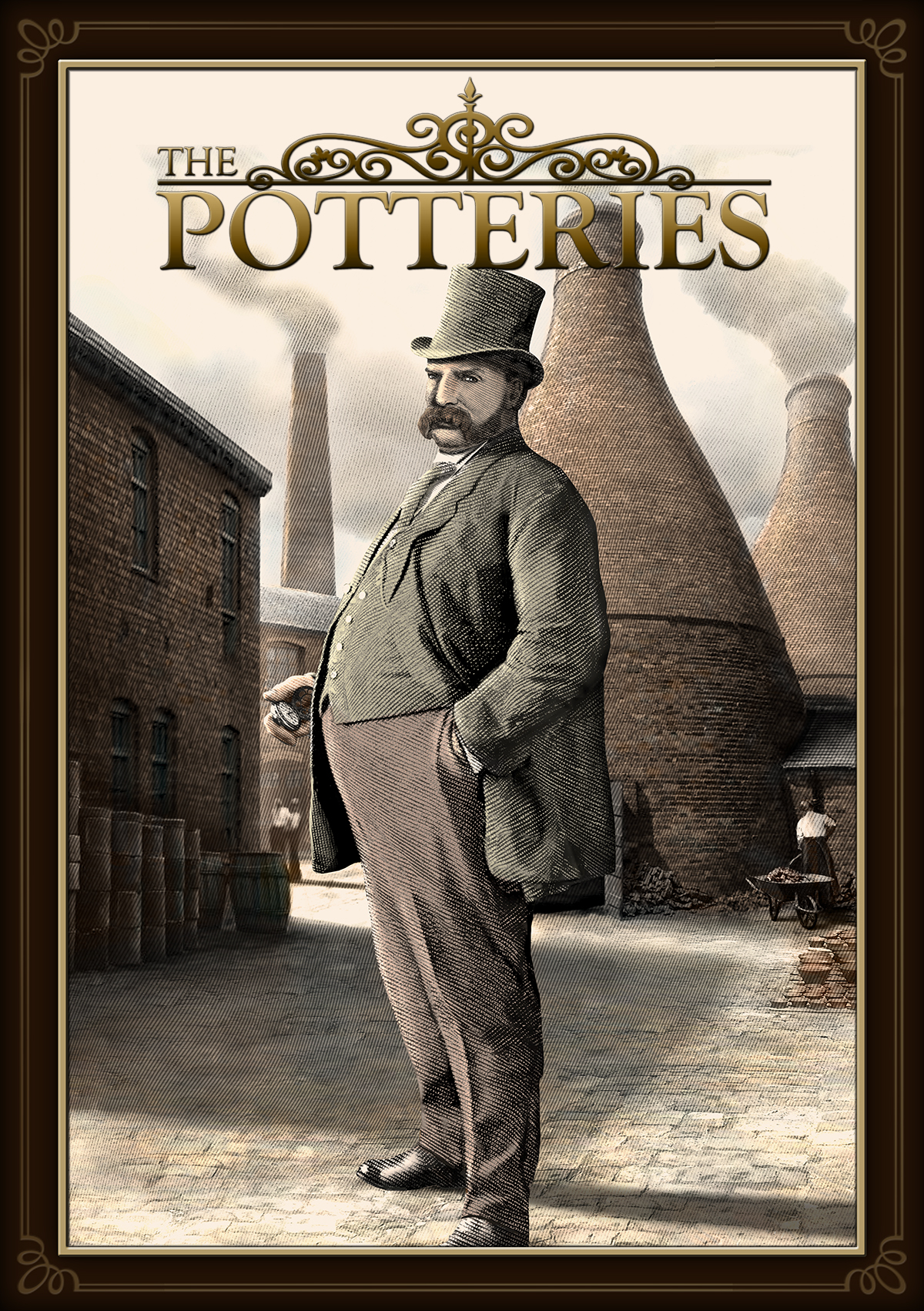Welcome to our new website - this is work in progress so please bear with us!
Take clay, shape it, then heat it up (REALLY heat it up), take it out, paint it. Pretty straightforward – a child could do it, and it is a process that has been carried on for thousands of years.
But in the Victorian English Midlands, birthplace of the industrial revolution, this is now big business. The country, and indeed the Empire, want dishes to eat off. Train lines join up the great industrial centres with the ports, and the blood of commerce flows more strongly every year. Great kilns are being built, and people arrive daily from the countryside to work long days digging clay, throwing pots, loading kilns, painting dishes – in exchange for enough for their families to eat.
But that’s the mucky business at the ground level. As a Victorian entrepreneur, you have money from your investors, and your challenge is how to invest that money, to make more money, and more……and more. So it goes.
The Potteries takes a simple cycle – get clay, fire pots, sell pots, get more clay – adds a lively auction system, and leaves the players to decide what to do with it.
Will you seek to invest in as much kiln space as possible and fire lots and lots of cheap dishes – be the big player?
Or will you go for the more discerning customer – get different varieties of clay and sell smaller numbers of higher value sets?
Or maybe you’ll step back a little from that cut-throat business, corner the market in desirable claypits, and get the other players to bid against each other for what comes from them?
Of course the other players are going to be competing for the same precious resources, so you may need to combine and shift about between these various strategies.
But rest assured, capitalism has arrived in Victorian England, and if you can’t compete, you’ll fall by the wayside.
Only the canniest businessperson is going to win this race….

